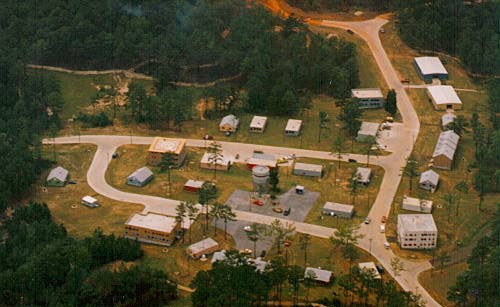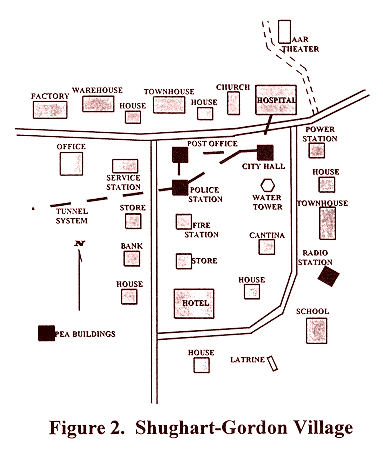










SITUATION
You are the commander of a platoon that is part of Battalion Landing Team (BLT) 1/5. BLT 1/5 is the Ground Combat Element (GCE) of the 31st Marine Expeditionary Unit (MEU). 31st MEU’s higher headquarters is Joint Task Force (JTF) Cortina. The JTF has been in the country of Cortina for two weeks performing peacekeeping/peacemaking missions in support of an international humanitarian relief effort. As a result of years of internal strife and factional fighting, Cortina has experienced a total breakdown of essential services such as medical treatment and food and water distribution. Though the majority of the local populace is supportive of JTF Cortina’s mission, there are armed factions that have been very active in attempting to undermine this mission. Your platoon consists of 42 Marines (three 13-man squads) plus two Marine Scout/Snipers, two Marine Interrogator/Translators and two Navy Corpsmen.
SPECIAL SITUATION
The following Rules of Engagement (ROE) apply:
1. Necessary and proportional force is authorized to control disturbances and disperse crowds threatening essential civic order.
2. Persons observed committing serious criminal acts will be detained using minimal force necessary up to and including deadly force. Serious criminal acts include homicide, aggravated assault, rape, arson and robbery. If you have exhausted all reasonable graduated response techniques and, in your opinion it appears that there will be a loss of human life, the use of deadly force may be used (as a last resort). Loss of life includes civilian on civilian violence.
3. Deadly force is not authorized to disarm Cortinians, enforce curfews, or stop looting, unless those individuals involved engage in hostile acts or demonstrate hostile intent. The looting or loss of non- sensitive equipment from U.S. sites or convoys are not grounds for the use of deadly force. Burglary and larceny are defined as looting, breaking and entering or stealing. These situations only warrant the use of non-lethal force "unless" the perpetrator is armed and displaying a hostile intent. In any situation, the existence of a perpetrator with a weapon displaying hostile intent is grounds for considering hostile intent. Hostile intent is defined as: pointing a weapon at an individual(s); holding hostages; discharging a weapon; striking an individual(s) with a weapon; and threatening to use the weapon or evidence of recent use of a weapon.
4. The medical ROE allow for U.S. forces to perform first aid for any individual (to prevent loss of life). However, civilian medical services must perform routine medical services for local nationals.
NOTE: JTF forces have the authority to conduct cordon and search operations in Cortina to establish a secure and safe environment. Targets are identified as an area, which contains items, or persons that pose a threat to JTF forces or Cortina nationals. Threat is defined as: anything that can or would cause a breakdown of a secure and safe environment. Weapons caches, communications equipment, explosives, counterfeiting and contraband are some examples of targets within Cortina. The use of deadly force is outlined in the ROE above. To expand on the ROE, robbery is different than larceny or burglary. A robbery is committed by gunpoint (or any other weapon) and has the potential for homicide. The looting of or stealing of relief supplies, foods and nonsensitive equipment or personal property can only be stopped by nonlethal force, unless the perpetrator has a weapon and displays a hostile intent. Hostile intent is defined as pointing a weapon at an individual(s); holding hostages; discharging a weapon; striking an individual(s) with a weapon and threatening to use the weapon or evidence of recent use of a weapon. Examples of hostile intent seen to date within Cortina include: direct fire from within or around a cordon site, hostage situations, crowd beatings of people (sometimes crime suspects) within or around the cordon, and security guards raising their weapons to protect the target of a JTF cordon and search. In most cases, JTF forces have erred on the side of restraint and were successful. The show-of-force “professional presence” and innovative “graduated response” techniques have so far defused the potential use of deadly force 99 percent of the time.
You are a platoon commander of a search team within a company cordon and search mission. The company has cordoned off the block that includes the post office, city hall, police station, fire station, water tower, cantina, general store, hotel and a private residence. Your platoon is responsible for searching the hotel (building number 23), house (building number 25) and general store (building number 14). The following events occur in sequence:
1. A dead body if found in the bedroom of the house.
2. Three large dogs are in a second bedroom, they begin barking and moving towards your Marines.
3. A civilian is spotted running from the house through the back door.
4. You detain the homeowner and he hands you an American passport with his picture on it.
5. Upon entering the hotel, your platoon encounters six Cortinian women hiding in a closet, two of them are armed with pistols.
6. The military-working dogs that are accompanying your platoon alert to a possible explosive device in one of the hotel rooms. You hear a young girl crying in that room.
7. As your platoon moves towards the general store, a man fires three shots towards and above your heads. He shouts that the store is off limits to Marines and to move on to another location or else he will shoot to kill.
8. Your platoon receives automatic rifle fire from the residence across the street (building number 27). One Marine receives a leg wound. You estimate that there at least two gunmen.
REQUIREMENTS
In a time limit of 20 minutes decide on how you would conduct the cordon and search and relate the orders that you would issue to your platoon for each of the above events. Remember that these events occurred in sequence. Be prepared to provide an explanation of your plan and possible alternatives should the situation either escalate or deescalate with each event.

The MOUT Homepage Hot Links:
Designing TDGs: A Tactical Decision Game Workbook (Marine Corps University)
Peace Operations Training Vignettes With Possible Solutions (CALL)


| HOME | CONCEPTS | DOCTRINE |
| OPERATIONS 1 | OPERATIONS 2 | TECHNOLOGY |
| COMMERCIAL | RESEARCH | ISSUES |
| COMMENTS | SIGN GUESTBOOK | VIEW GUESTBOOK |
| UNITS/IMAGES | DEDICATION |

